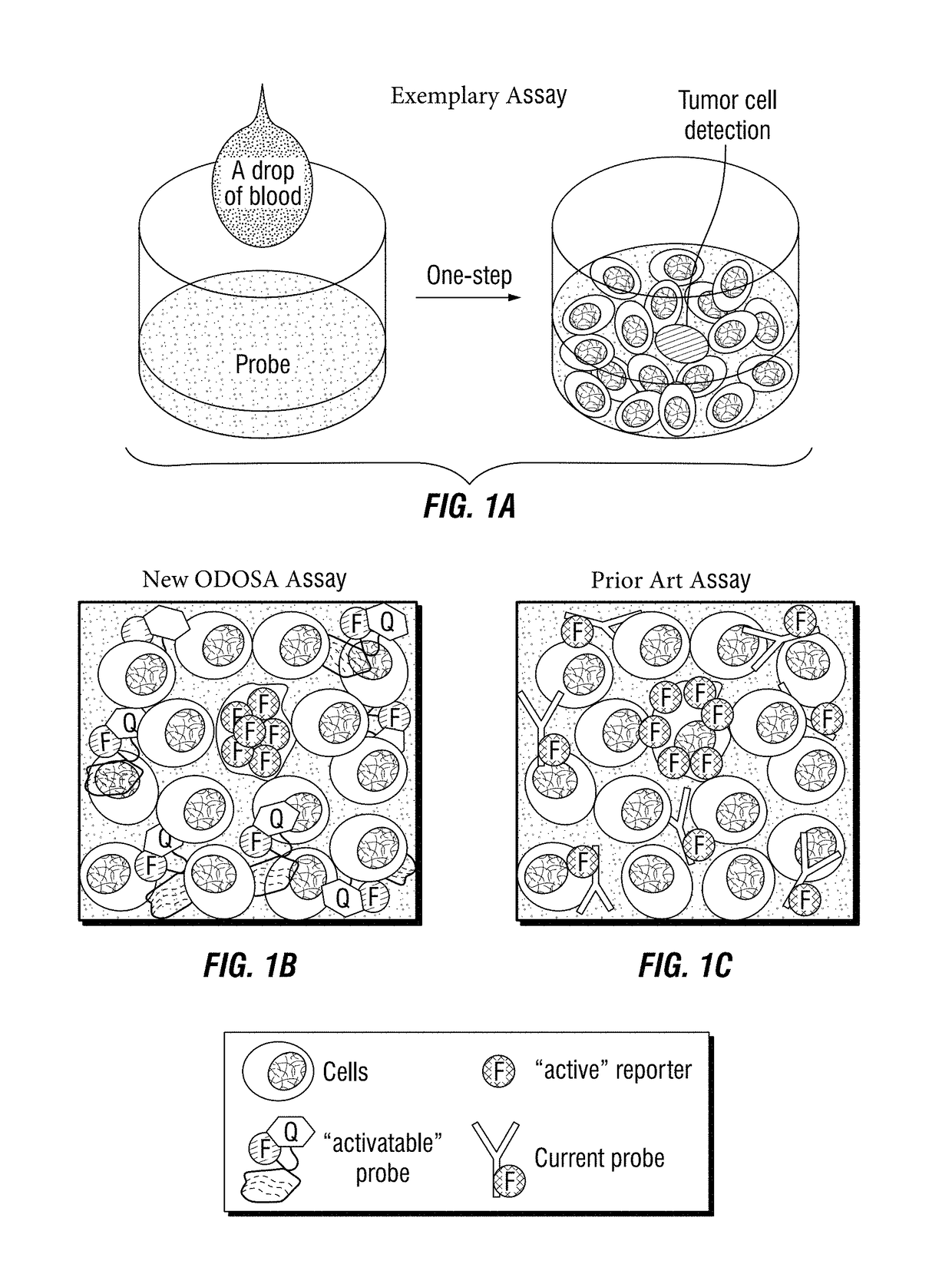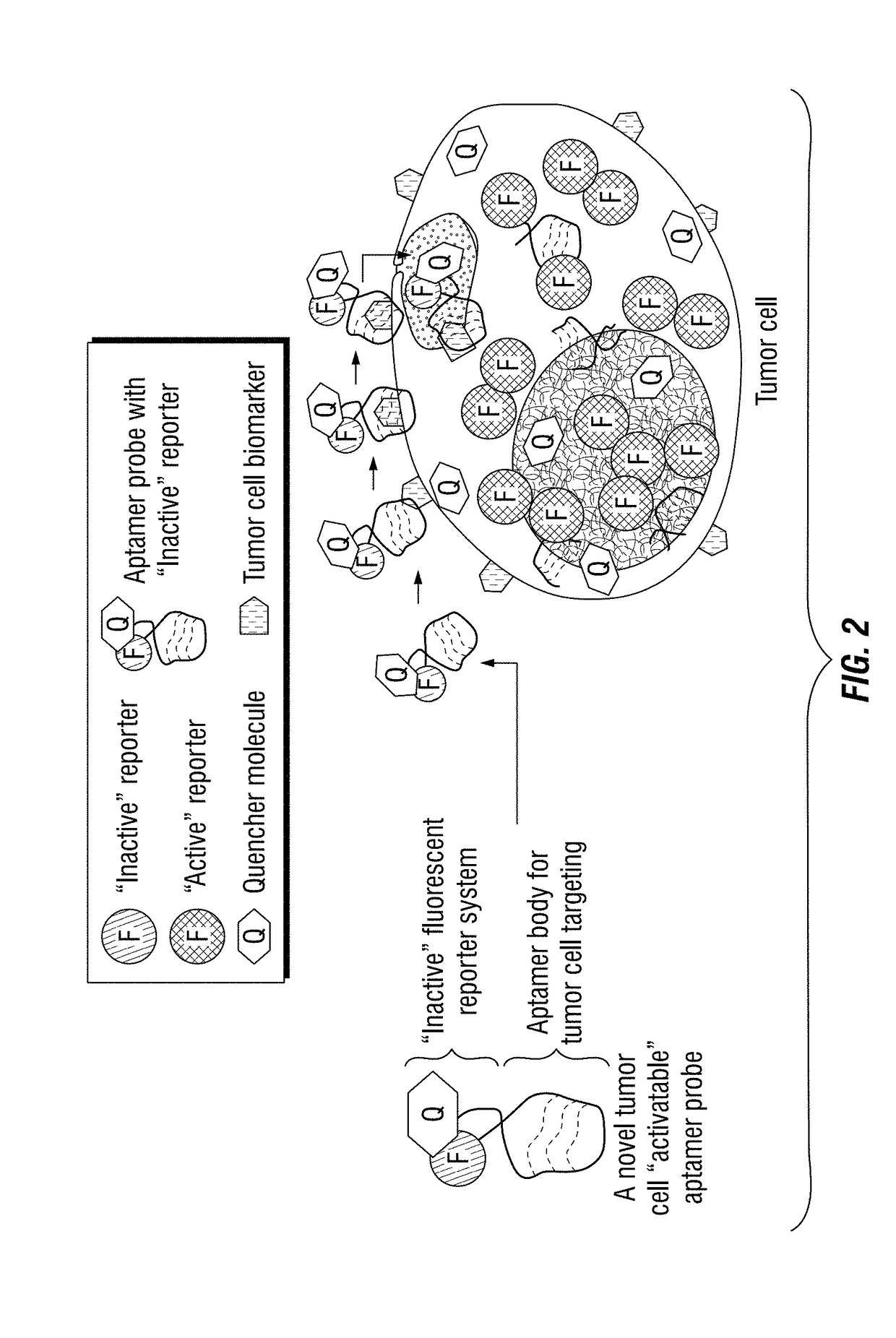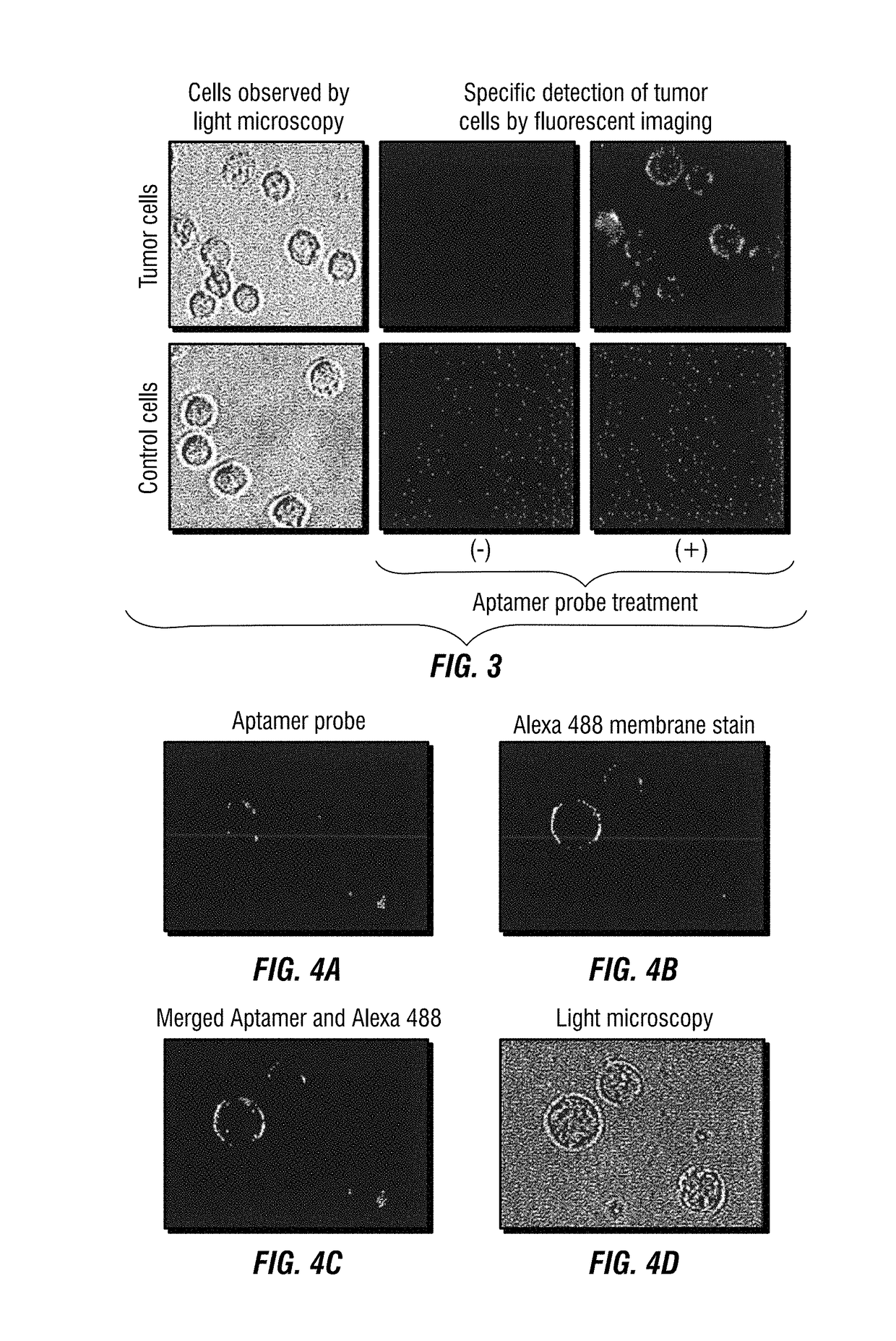Multi-aptamer-based, cell-specific, one-step tumor cell detection assays
a tumor cell and multi-aptamer technology, applied in the field of clinical chemistry, oncology, and diagnostic medical assays, can solve the problems of multiple step protocols, limiting the sensitivity of current assays, and no such assays available, and achieves high sensitiveness, high accuracy and reliability, and easy implementation and execution.
- Summary
- Abstract
- Description
- Claims
- Application Information
AI Technical Summary
Benefits of technology
Problems solved by technology
Method used
Image
Examples
example 1
Tumor Cell Detection Assay System
[0159]To develop an exemplary assay system with significant potential for clinical application, RNA-based aptamers that are specific for one or more cellular biomarkers (e.g., CD30 protein) were synthesized (Zhang et al., 2009) and each were conjugated to a specific fluorochrome reporter molecule (such as Cy 3, Cy5.5, etc.) operably linked to a quencher molecule (e.g., BHQ2).
[0160]Freshly cultured CD30-positive lymphoma cells (ATCC, Manassas, Va., USA) were stained with the aptamer probes or anti-CD30 antibody (BD Biosciences) as a standard control. Flow cytometry analysis showed that the aptamer probe is able to selectively bind to and detect lymphoma cells that express CD30 (Zhang et al., 2009). Specific cell binding of aptamer probes was also confirmed by fluorescence microscopy at a final concentration as low as 0.3 nM. Multicolor flow cytometry demonstrated that comprehensive immunophenotyping of lymphoma cells could be performed by using oligon...
example 2
Aptamer Probes as Replacements for Conventional Antibody-Based Diagnostics
[0178]In this example, the use of a synthetic aptamer probe for cell immunophenotyping, tissue immunohistochemical (IHC) stain, and blood circulating tumor cell detection was demonstrated.
[0179]Experimental Methods
[0180]For immunophenotyping a CD30-specific aptamer probe (FIG. 4A) was synthesized and conjugated with a fluorochrome Cy5.5 reporter. Cultured lymphoma cells as showed in FIG. 16 were stained with the aptamer probe in combination with antibodies and analyzed by multicolor flow cytometry as published previously (Zhang et al., 2009). For tissue IHC study, biotinylated aptamer probes were generated (Integrated DNA Technologies, Coralville, Iowa, USA). Formalin-fixed and paraffin-embedded lymphoma tissues were stained with the aptamer probes (FIG. 17) and visualized by a HRP-conjugated streptavidin color development kit (Dako).
[0181]For circulating tumor cell detection a novel “intracellular-activatable...
example 3
Design of “Intra-Tumor Cell-Activatable” Aptamer Probes
[0184]To develop the one-step assay technology for circulating tumor cell detection, the inventors chose to use aptamers instead of traditional antibody probes for target recognition and signal reporting. Aptamer sequences were synthesized, and conjugated to the fluorochrome Cy3 (Integrated DNA Technologies) and quencher BHQ2 molecules (Integrated DNA Technologies) at the 5′- and 3′ ends, respectively (FIG. 4B). Notably, in the absence of cells of interest, the aptamer probes are optically silent (i.e., “inactive”), because the fluorochrome is completely quenched / inactivated by the paired quencher molecule that is present on the same aptamer molecule (FIG. 4C). After specifically binding to targeted tumor cells and being internalized, however, subsequent lysosomal degradation of the aptamer sequence activates the previously-optically-silent reporter system by freeing the fluorochrome from the paired quencher molecule, resulting ...
PUM
| Property | Measurement | Unit |
|---|---|---|
| volume | aaaaa | aaaaa |
| volume | aaaaa | aaaaa |
| volume | aaaaa | aaaaa |
Abstract
Description
Claims
Application Information
 Login to View More
Login to View More - R&D
- Intellectual Property
- Life Sciences
- Materials
- Tech Scout
- Unparalleled Data Quality
- Higher Quality Content
- 60% Fewer Hallucinations
Browse by: Latest US Patents, China's latest patents, Technical Efficacy Thesaurus, Application Domain, Technology Topic, Popular Technical Reports.
© 2025 PatSnap. All rights reserved.Legal|Privacy policy|Modern Slavery Act Transparency Statement|Sitemap|About US| Contact US: help@patsnap.com



